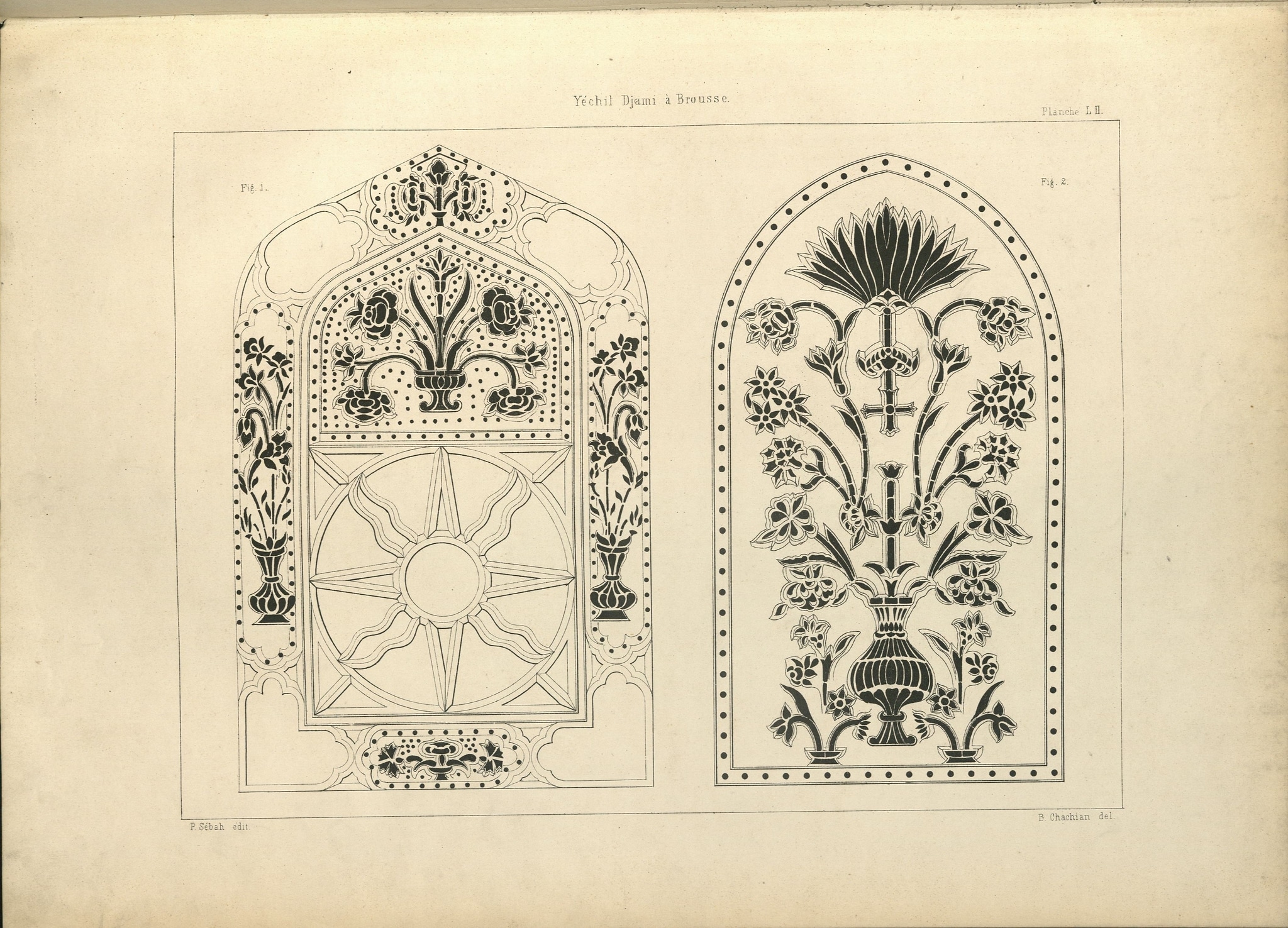Ill. LII, figs 1, 2, in Marie de Launay, Die Ottomanische Baukunst / L’Architecture ottomane / Uṣūl-i Miʿmāriyye-i ʿUsmaniyye, Istanbul: Imprimerie et lithographie centrales (1873) shows two stucco and glass windows in black and white based on a drawing by Bogos Şaşiyan.
Fig. 1 on the left shows a pointed-arch window. It is divided into several sections. In the frame, empty sections alternate with elongated sections with the depiction of flowers in a bulbous vase with a long neck. The frames of these sections are decorated with black dots, which are supposed to depict small circular perforations in the stucco backed with glass. The window’s centre consists of a lower part with a circular section inside a rectangular form and an upper part consisting of the pointed arch. The lower part is filled by the outlines of a sun with sun rays. All its sections are plain, and no black colour is used to suggest small sections of coloured glass. In contrast to this, the upper part contains flowers in a wide vase and dots in the background depicted through black colouring within outlines, which partly suggest three-dimensionality.
Fig. 2 on the right shows a pointed-arch window with only one central section and a thin frame. This frame is filled with small black dots, which are supposed to depict small circular perforations in the stucco backed with glass, as in fig. 1. The central section is occupied by a single big vase with a slender foot, bulbous body, and quite short neck. It is the point of origin for different kinds of flowers. On top a big blossom springs out of a small cross. At the bottom of this section, to the left and to the right of the central vase, there is a flat bowl with flowers. Again, the depictions are constructed by black spots within outlines, which slightly suggest three-dimensionality.
25G41(CARNATION) · flowers: carnation
25G41(ROSE) · flowers: rose
41A6711 · flowers in a vase
